Mulch after planting flowers to keep water in the soil and stop weeds. Adding mulch after planting flowers will make it easier avoid accidentally mixing mulch into the soil as you dig. If mulch is mixed into the soil your flowers will get less nitrogen as soil microbes break down the organic matter. Keep mulch 1-2 inches away from flower stems to avoid rot and use a good quality mulch like bark or straw.
How to mulch after planting flowers
- Rake the soil flat ready to plant your flowers.
- Add a small amount of compost and aged cow manure into the soil before planting.
- Make a small hole, place your flower in the hole and backfill with soil.
- Move bark mulch or straw mulch around the flower keeping it 1-2 inches away from the stem.
- Water the plant in after mulching to soak the plant roots and keep the mulch in place.
If you are not ready to plant flowers in your soil straight away, cover the soil with mulch to protect it from drying out. Always have your soil covered with mulch and move it back with a rake when you are ready to plant your annual or perennial flowers.
Why you should mulch after planting flowers
Mulch after planting flowers because this will avoid mulch from mixing into the soil as you plant. Mulch that gets mixed in the soil can draw nitrogen away from your flowers. Mulching after planting flowers will also help it to stay in place as you water your new plants in. This is particularly important if you are using lighter mulches like straw, hay or sugar cane.
Mulching after planting will make it easier to move mulch around the plant roots. You can see where the plant roots end and can see where the stem is. Avoid putting mulch any closer than 1-2 inches from the stem as this will avoid stem rot.
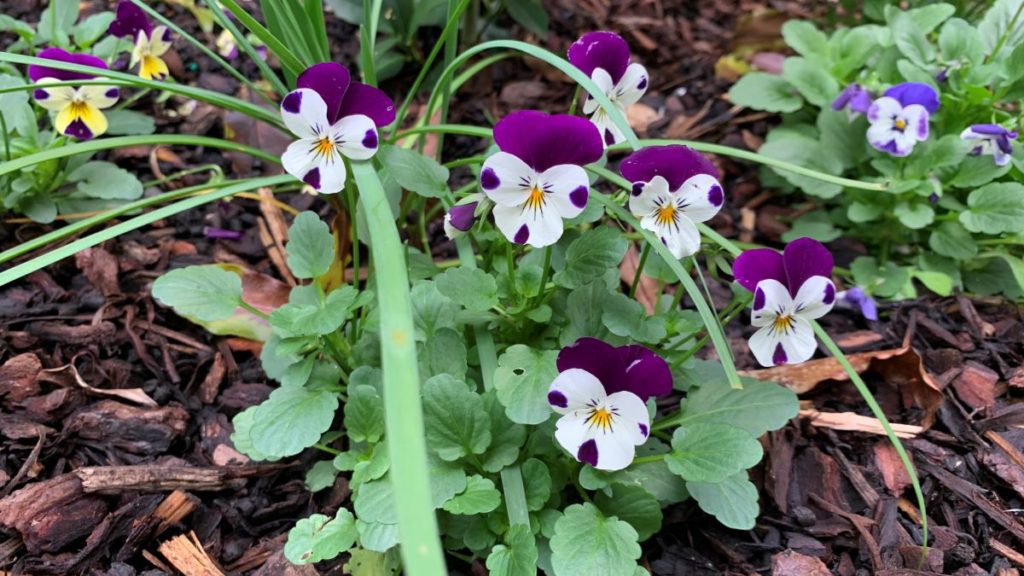
Adding mulch after planting flowers also makes it easier to mix organic matter into soil without mulch in the way. Before planting it is always a good idea to add some extra aged cow manure or compost to your soil to set your flowers up to grow well over the next year. This is much easier to do if you don’t have mulch in your way.
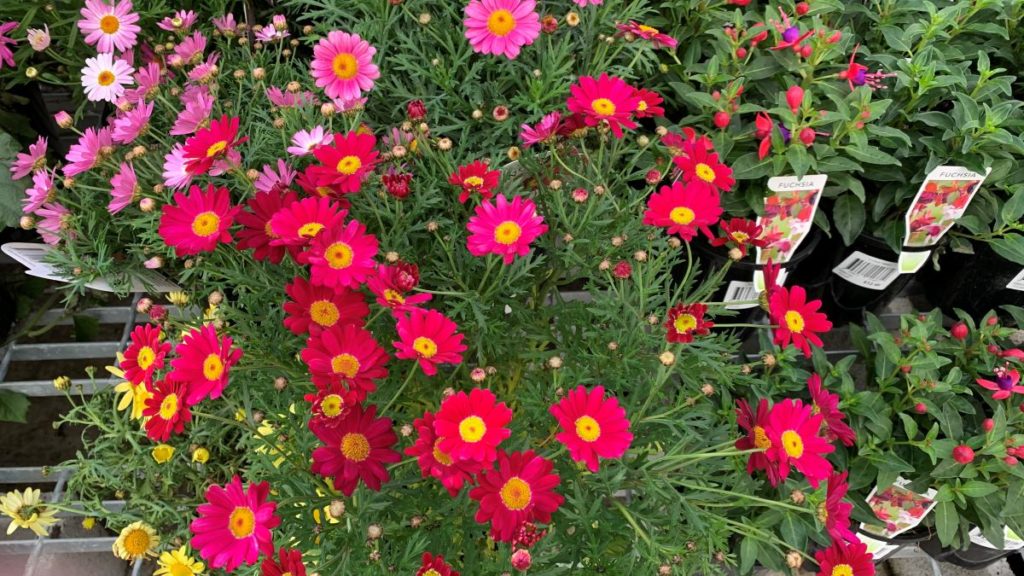
Once your flowers have been planted it is also easier to see how much mulch is needed. Often I find that when I rake mulch back, there never seems to be enough to cover the space over again. Seeing the space that needs to be covered clearly makes it easier to lay enough mulch for your flowers.
Most importantly, adding mulch after planting holds moisture in the soil and prevents weeds. Mulch is a great way to set your plants up to grow well over the season.
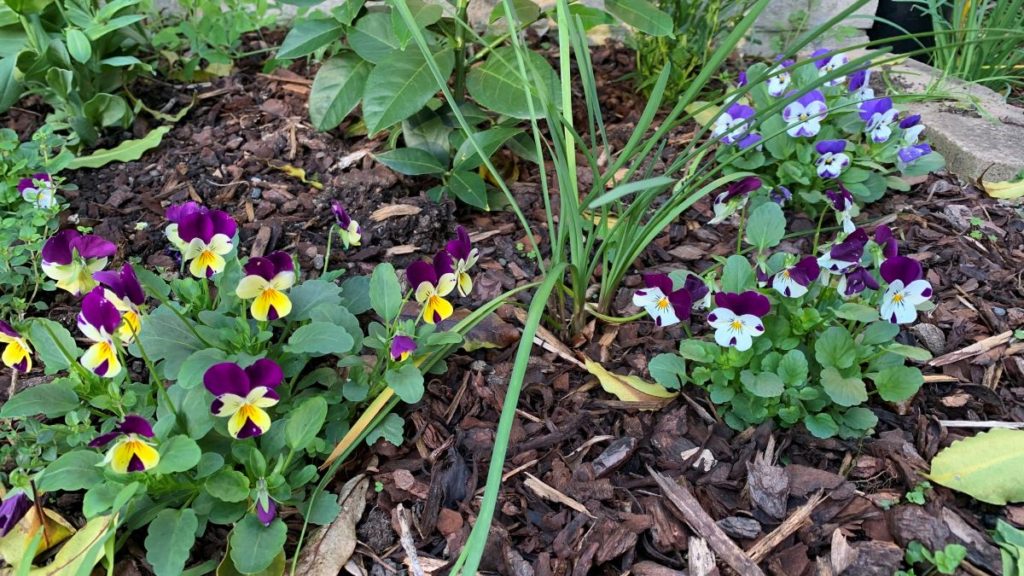
Does mulch prevent flowers from growing?
Mulch will not prevent your flowers from growing if you place it around the plant away from the stem. Mulch will keep weeds away, keep soil moisture in and encourage more leaf growth.
Mulch helps to improve the soil and add nutrients such as nitrogen as it is broken down and mixed through your soil by worms and soil microbes.
The nitrogen will support the plant to grow healthy leaves and stems an over time. This will establish the plant so that it is ready to burst into flower.
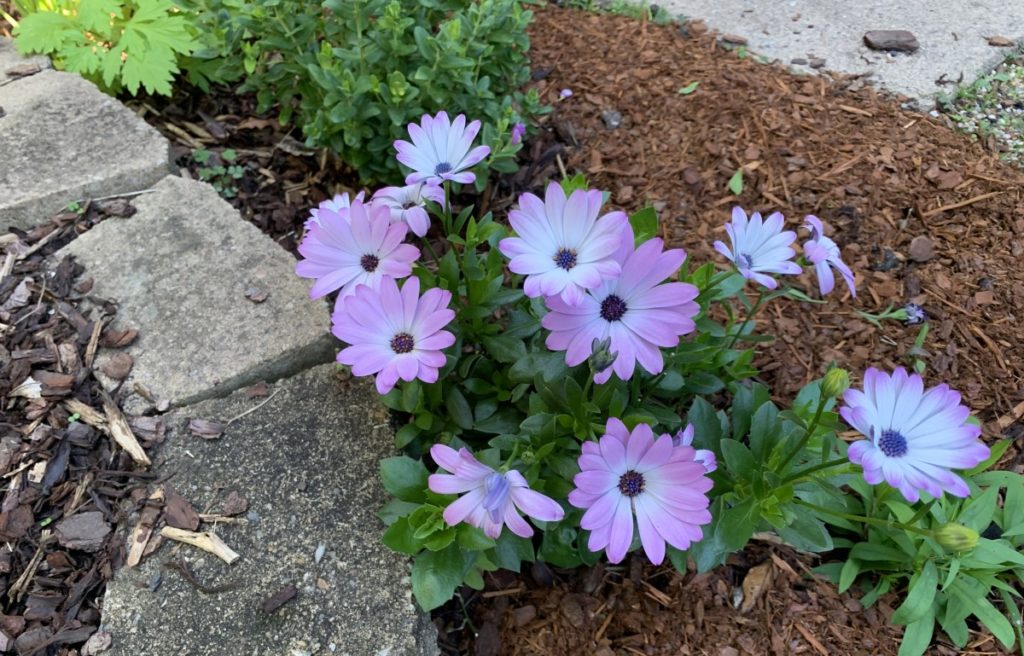
If your annual flowers are growing lots of leaves but no flowers, don’t add any extra fertilizer to your plant and keep it well watered. The plant will begin to flower as the nitrogen in the soil is used up.
I always mulch around my flowers and always have colorful displays of annual flowers such as violas each year.
Growing flowers through mulch
Flowers will not grow through mulch if you place the mulch over the plant. Make sure you keep mulch away from plant stems to allow air movement around the stem to stop any stem rot or disease.
If mulch gets moved over your flowering plant by the wind, kids or dogs running through the bed then brush it back with your hands gently so you don’t damage the leaves or the plant.
Keeping the mulch off the leaves will allow the plant to get sunlight to photosynthesize, making food for the plant and releasing small amounts of oxygen. The plant will then be ready to flower with lots of energy and nutrients fuel growth.
To encourage the plant to keep flowering, make sure you remove the old flower heads by pinching them off with your fingertips. This will encourage the plant to keep growing flowers over the season.
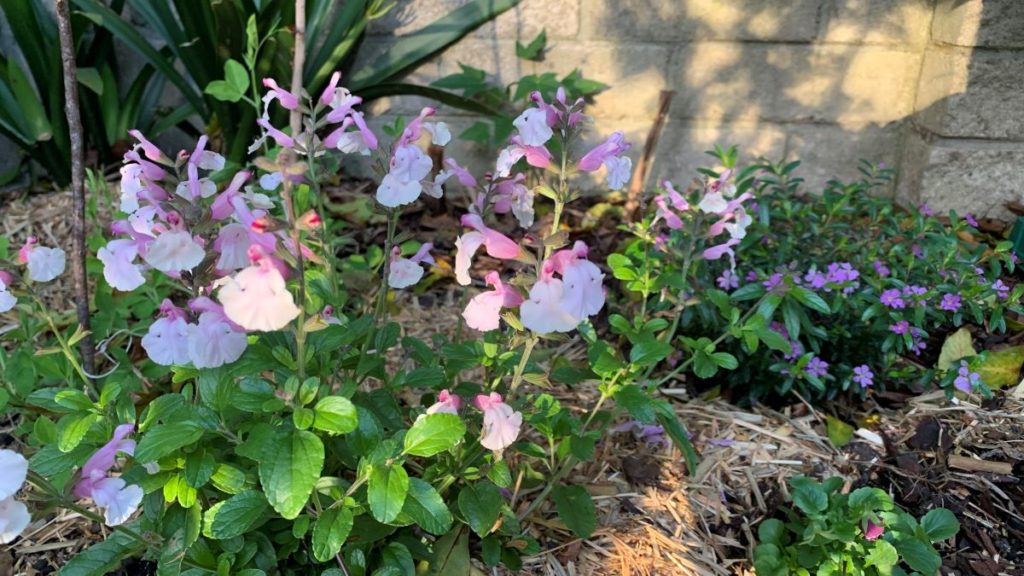
Mulch before or after planting flower seeds
Mulch after you have planted flower seeds, when you start to see the sprouts come through the ground. This will make sure the seeds have enough light and space to push through the ground and grow.
If you are planting larger flower seeds like sweet peas then you can rake back any mulch you have already laid and plant the seeds.
I planted sweet peas in a garden bed that already was covered in mulch and the seeds grew through well. I left the ground without mulch letting the seeds continue to grow.
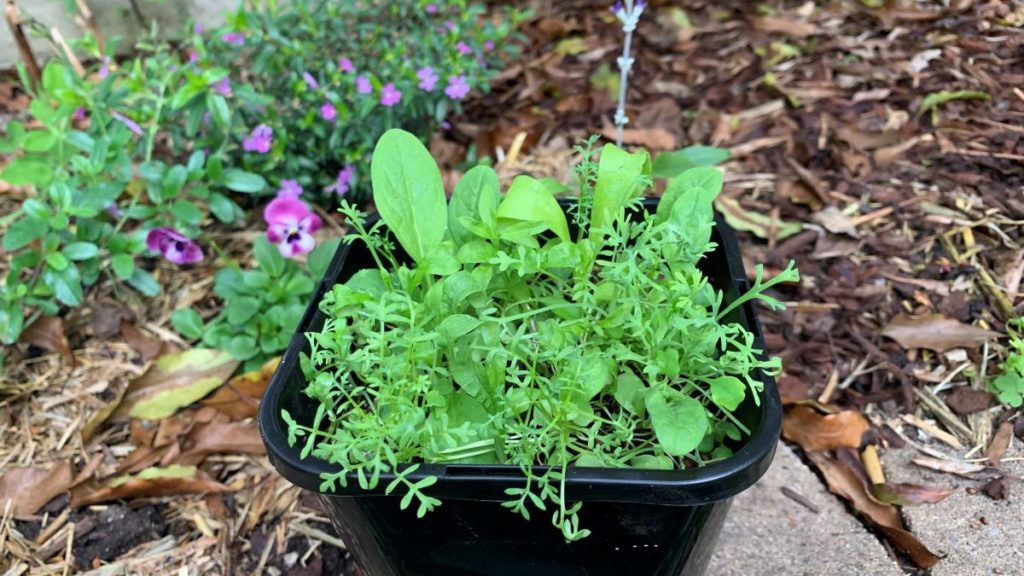
Best mulch for flowers
The best mulch for all flowers is a bark mulch mix or tree mulch. This will contain a mixture of green and brown materials made from the leaves, stems and branches of trees.
The mix of small, large, green and brown materials will make the perfect mix to add your flower beds. It will break down over time adding nitrogen and carbon to the soil.
You could also use a lighter mulch like sugar cane mulch, hay, pea straw or Lucerne mulch. These will break down quicker and may get moved around by the wind.
These are still great mulch options and can be dug into the garden bed at the end of the season after you annual plants have finished flowering. This will add extra nutrients to the soil ready for the next plants you grow.

Why mulch is good for flowers
Tree mulch will help to keep moisture in the soil when you put it under and around your flowering plants. Mulch will help to attract worms to dig through to the surface and around your flowers, which will aerate the soil and create nutrient rich worm castings.
Mulch will also increase the microorganism mix in your soil to break down the organic matter and make the nutrients available to be absorbed by your flowering plants.
Tree bark mulch can be used under all your flowering plants, including annuals like pansies, violas, dianthus, as well as perennial flowering plants like salvia, tibouchina, daisies and tulips.
Any flower that you grow in your garden bed will benefit from mulching.
GARDEN HACK: Add a small handful of pelleted chicken manure or a thin layer of aged cow manure under the mulch first. This will help to replace the small amount of nitrogen that is locked up as the mulch is broken down by the microorganisms making sure the plant has access to the nitrogen it needs.
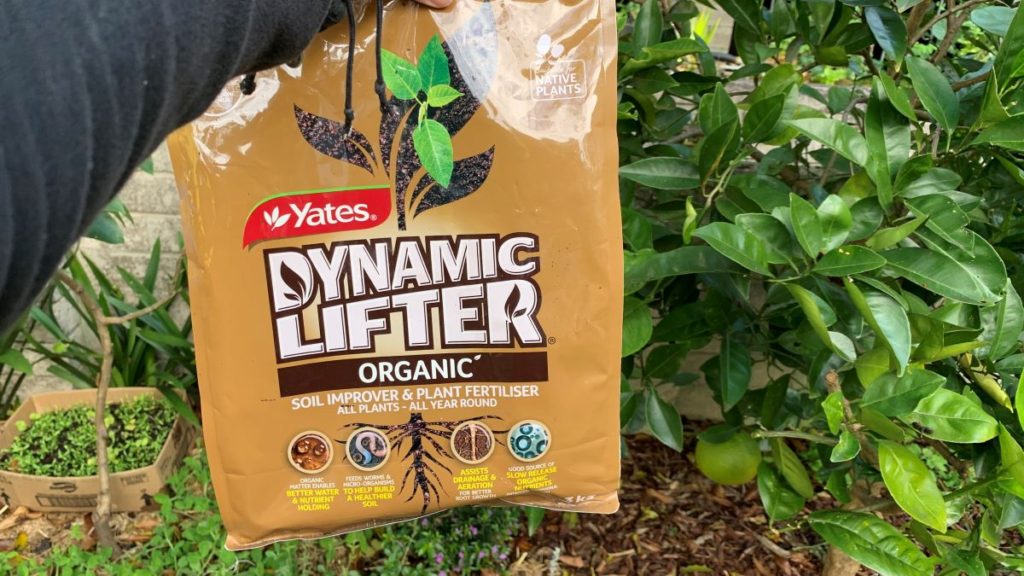
How thick to lay mulch around flowers
Apply mulch around 2 inches thick around your flowers. This will stop the weeds growing through while still letting the rain get through to your soil.
The mulch layer will stop weeds from getting enough light to grow and will keep the moisture levels more consistent for your flowers.
If weeds do grow through the mulch, they will be easier to pull out as the soil will be softer and the weeds would have had to work harder to get through the mulch.
Over time you will find that less and less weeds will grow through your mulch. Keep the mulch layer topped up to be 2 inches thick and you will have a weed free, healthy flower garden.

Mulch around flowers every year
You should top up the mulch around flowers whenever the thickness of the mulch gets below 2 inches. This is usually once or twice per year if you are using tree mulch.
The tree mulch will break down over time and need to be topped up to stop the weeds from growing and keep the moisture in the soil. Just add more mulch straight on top of the old mulch to keep your flowers happy.
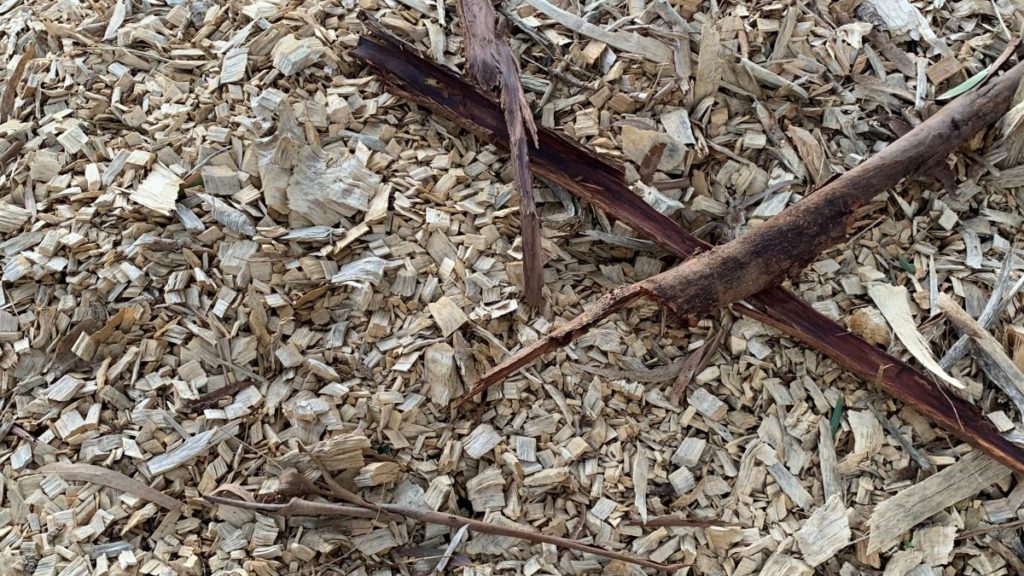
How often to change mulch around flowers
You should not remove old mulch from around flowers but just top up the mulch level when it get below 2 inches.
Mulch will naturally break down over time, adding nutrients to the soil and eventually turn into compost. This is a high carbon, nutrient rich substance perfect to support plant growth.
Let the old mulch continue to break down and just add new mulch straight on top.
Planting annual flowers after mulching
You can plant annual flowers like pansies and violas after you mulch. Just move the mulch back to expose the soil.
Make sure there is at least 1 inch of space between the mulch and the plant when you first put it in. Flowers will soon grow on your annuals, and they will love the soil protection provided by the mulch around them.
Tree mulch is a fantastic addition to any home garden for flower beds, paths and under fruit trees. I love tree mulch and use it all through my garden.
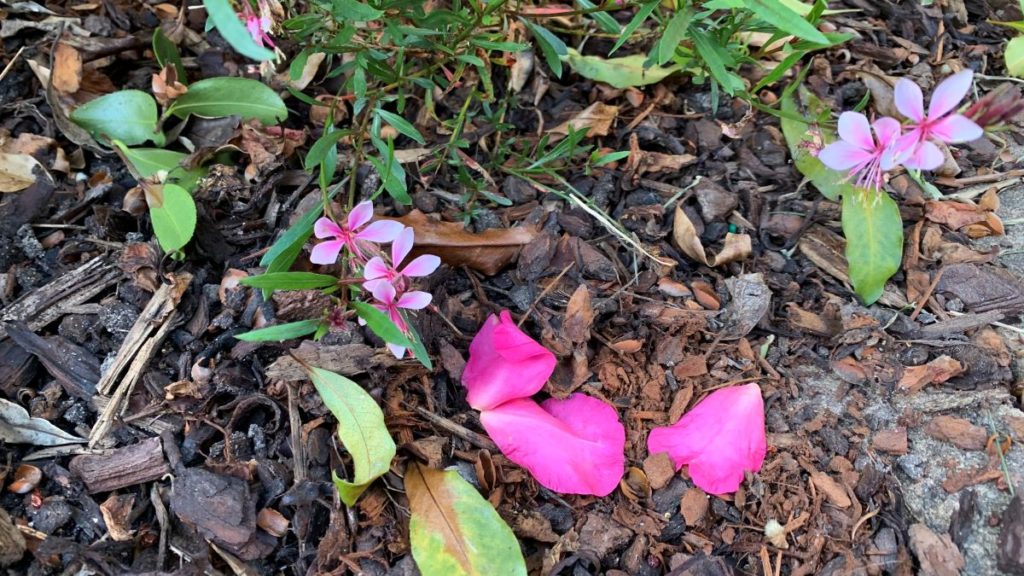
Mulch before or after planting flowers – Summary
Planting flowers before mulching is the easiest way to avoid mixing any mulch through your soil. If you already have added mulch to your garden, use a rake to move the mulch back to make it easier to dig the soil and plant your new flowers.
The best mulch for flowers is mixed tree mulch but whatever you have around your house will work including dry fall leaves.
Happy planting.
I am an accredited practicing dietitian, experienced gardener and a dedicated cook. I love writing and sharing my experience so you can learn from my successes and mistakes.

Comments are closed.